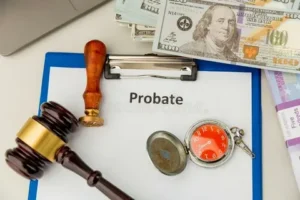Unlocking the CPA Journey: Essential US CPA Course Details Explained
The Certified Public Accountant (CPA) designation is a globally respected credential that opens doors to advanced opportunities in accounting, auditing, taxation, and financial management. For aspiring finance professionals, understanding the CPA course details is the first step toward achieving this prestigious qualification. Whether you’re a student or a working professional, this guide will break down the essentials of the US CPA course, covering eligibility, exam structure, requirements, and the path to certification.
Why Choose the US CPA Course?
The US CPA course is one of the most recognized accounting qualifications in the world. It not only validates a candidate’s accounting expertise but also signals a high level of integrity and professionalism. Holding a CPA license can lead to senior roles in accounting firms, multinational corporations, government agencies, and non-profit organizations. In today’s global economy, where compliance, transparency, and expertise are highly valued, becoming a CPA is a strategic career move.
CPA Course Details: A Snapshot
The US CPA certification is administered by the American Institute of Certified Public Accountants (AICPA) and is regulated at the state level by individual Boards of Accountancy. While requirements may vary slightly between states, the general structure of the course and exam remains consistent.
Key Components:
- Eligibility requirements
- Exam structure and subjects
- Licensing process
- Work experience
- Continuing education
Let’s look at each component in more detail.
Eligibility Criteria for the US CPA Course
Before diving into the exams, it’s important to understand who can apply for the CPA course. Although specific criteria may vary by state, most boards follow a similar framework:
Educational Qualifications:
- A bachelor’s degree in accounting or a related field is typically required.
- Many states require 150 semester hours of education to sit for the exam or obtain licensure.
Work Experience:
- Most boards require 1 to 2 years of relevant work experience under the supervision of a licensed CPA.
Age & Ethics:
- Candidates must generally be at least 18 years old.
- Some states also require passing an ethics exam as part of the licensing process.
International candidates should confirm their eligibility with the specific state board they intend to apply to, as credential evaluation may be needed.
US CPA Exam Structure
The heart of the CPA course details is the Uniform CPA Examination. This exam tests the knowledge and skills essential for a modern accountant and follows a rigorous structure. As of 2025, the CPA Exam has been modernized under the “CPA Evolution” initiative, aligning it with the changing demands of the profession.
The Exam Includes:
Core Sections (3 mandatory):
- Auditing and Attestation (AUD)
Covers audit procedures, risk assessment, professional ethics, and internal controls. - Financial Accounting and Reporting (FAR)
Focuses on financial statements, GAAP principles, and government and non-profit accounting. - Regulation (REG)
Includes taxation (individual and corporate), business law, and ethics.
Discipline Section (Choose 1):
- Business Analysis and Reporting (BAR)
- Information Systems and Controls (ISC)
- Tax Compliance and Planning (TCP)
Each section is 4 hours long and includes multiple-choice questions, task-based simulations, and written communication tasks (in some sections).
Step-by-Step CPA Certification Path
Here is a simplified breakdown of how to go from a CPA aspirant to a licensed professional:
1. Choose a State Board and Apply
Research and select the state board that aligns with your qualifications and career goals. Submit your application and required documents.
2. Receive the Notice to Schedule (NTS)
Once your application is accepted, you’ll receive an NTS allowing you to book your exam sections at approved testing centers.
3. Schedule and Take the Exams
You can take each of the four exam sections in any order. All sections must be completed within an 18-month window after passing the first one.
4. Complete the Ethics Exam (if required)
Some states mandate a separate ethics exam to ensure candidates understand and commit to professional conduct.
5. Gain the Required Work Experience
Fulfill your state’s work experience requirement in a relevant accounting role, usually under a licensed CPA’s supervision.
6. Apply for Your CPA License
Once all criteria are met, you can apply for licensure with your state board.
Continuing Professional Education (CPE)
After earning your CPA license, the journey doesn’t end. CPAs must stay updated through Continuing Professional Education (CPE). Most states require a certain number of CPE hours annually or biennially, including ethics and technical updates.
Career Opportunities After the CPA Course
Completing the US CPA course unlocks a wide array of career options across industries and geographies. Some of the prominent roles include:
- Public Accountant – Specializing in auditing, taxation, and consulting.
- Management Accountant – Involved in budgeting, cost control, and financial planning.
- Internal Auditor – Ensures financial and operational compliance within organizations.
- Financial Analyst – Performs detailed financial evaluations to assist decision-making.
- Forensic Accountant – Investigates fraud and financial discrepancies.
A CPA license also enables professionals to move into leadership positions such as Controller, Director of Finance, or even Chief Financial Officer (CFO).
Benefits of Earning the CPA Credential
Here are some compelling reasons why the CPA designation is highly valued:
- Global Recognition: Recognized across borders, the US CPA credential adds international credibility.
- Career Advancement: CPAs are often preferred for senior roles and strategic decision-making positions.
- High Earning Potential: CPAs typically earn more than their non-certified peers.
- Job Security: Certified professionals remain in demand regardless of market fluctuations.
- Professional Prestige: Holding a CPA license signals trust, integrity, and a commitment to excellence.
Challenges Along the Way
While rewarding, the CPA journey comes with its own set of challenges:
- Time Commitment: Balancing study and work requires strong time management.
- Exam Difficulty: The CPA exams are known for their depth and breadth.
- Staying Current: Professionals must continually update their knowledge and skills post-certification.
With determination, planning, and consistent effort, these challenges can be overcome.
Final Thoughts
The path to becoming a Certified Public Accountant may be demanding, but it is undoubtedly rewarding. Understanding the CPA course details and the structure of the US CPA course is crucial to making informed decisions and planning your journey effectively. Whether you’re aiming to work in public accounting, corporate finance, or advisory services, the CPA credential is your gateway to a fulfilling and dynamic career in accounting.
By committing to this path, you’re investing in not just a title, but in a future full of professional growth, opportunity, and achievement.













